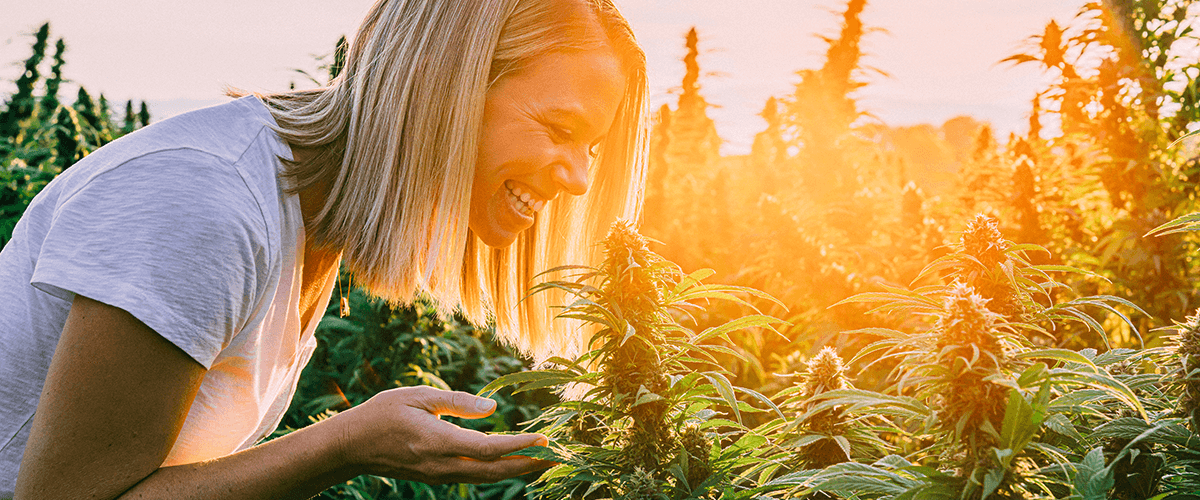
While the pharmaceutical industry has provided life-saving medications for a countless number of illnesses, there are certain disorders it has not produced effective enough solutions for. Some of these, such as depression, anxiety, and PTSD, have become pandemic in their proportion, and the millions of individuals who are suffering from them have been seeking alternative ways to heal.
As a natural compound found in a plant used for thousands of years throughout human history, CBD (cannabidiol) has presented itself as a viable treatment for these, and dozens of other persistent disorders, whether physiological, psychological or both.
With a plethora of remarkable results in scientific studies, no psychoactive effects, and only rarely recorded, generally mild side effects, CBD use has been gaining popularity among those looking for a more effective and less harmful, natural remedy to their suffering.
CBD is most often consumed in oil or tincture form, orally, or even applied to the skin as a cream. However, this article will focus on the quickest-acting and most efficient way of ingesting CBD in its natural form — by smoking or vaping CBD flowers.
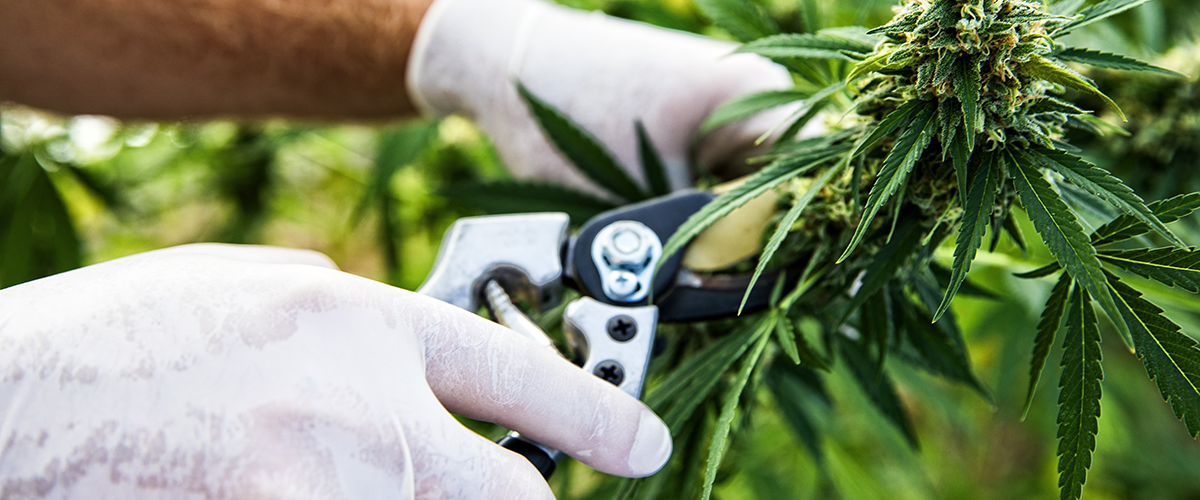
CBD flowers are CBD-rich buds produced by hemp — a variety of Cannabis sativa that contains a low amount of THC (tetrahydrocannabinol), the well-known psychoactive cannabinoid found in high levels in recreational marijuana.
Some hemp plants, particularly those grown specifically for producing CBD flowers, have been selectively bred to contain a negligible amount of THC — normally, under 0.3 or 0.2%, depending on the regional regulations. In many countries around the world and states in the US, CBD flowers and other products made from these plants are legal for medicinal or recreational use or both.
Most other hemp varieties are also cultivated with a focus on boosting CBD, but without completely reducing THC levels — still, they normally contain significantly lower amounts of the psychoactive molecule compared to recreational cannabis plants. However, because these plants are usually subject to stricter legal regulations, CBD and other compounds are often extracted from them, and, sometimes, THC is completely removed, to create a variety of CBD-infused products.
Consuming CBD-rich cannabis plants or their extracts typically does not produce consciousness-altering effects, unless they are specifically indicated to contain THC in sufficient quantities. Cannabidiol has no psychoactive properties whatsoever — even further, it actually works in synergy with THC to reduce, or balance out, its psychoactive effects. This joint effect (pun intended) is referred to as the ‘entourage’ effect in cannabis.
Because the cannabinoid pair produces even more medicinal benefits than if consumed individually, and a milder ‘high’ than high-THC low-CBD strains do, some cultivars breed cannabis plants specifically to contain high levels of both. The buds or extracts from these specialized plants are typically only available in medicinal cannabis stores with a prescription.
As for regular CBD flowers, aside from CBD and a speck of THC, they also contain a host of other cannabinoids in low amounts, such as the ‘parent’ cannabinoid of CBD & THC — CBG (cannabigerol), CBD’s ‘child’ CBC (cannabichromene), THC’s ‘child’ CBN (cannabinol), as well as CBV (cannabivarin), cannabicyclol (CBL), and dozens of others. None of these minor cannabinoids are psychoactive, many of them have been found to have therapeutic properties, and they all work in synergy or ‘entourage’ with one another.
But, there is more than just cannabinoids present in CBD flowers — two more classes of molecules, called terpenes and flavonoids, make up the individual components of each strain of Cannabis sativa. The kinds and levels of these compounds make up the unique aroma and effect profile of different strains. It’s assumed that they also have slightly therapeutic properties and that they synergize with one another, as well as with cannabinoids.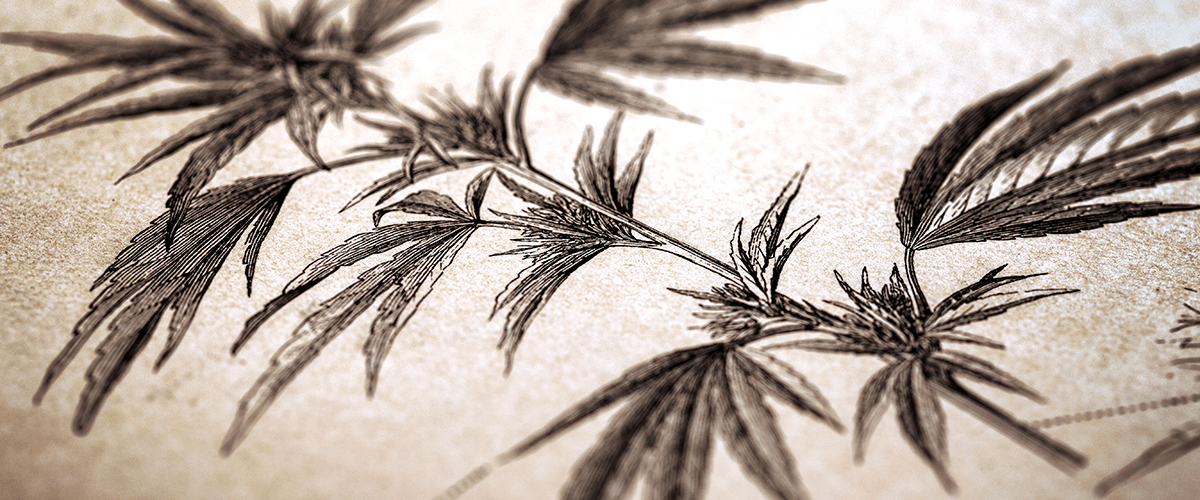
Cannabis sativa has been employed for a wide range of purposes since ancestral times. The plant’s most utilitarian use through history has been to make rope — with its naturally strong filaments and extremely quick growth (rivaling that of bamboo), it’s thought that Homo sapiens discovered how to spin it into usable fiber as early as 50,000 years ago.
There’s also evidence that Cannabis sativa was among the first plants to be cultivated by man — hemp fiber imprints found on Yangshao culture pottery in China have been dated to around the 5th millennium BC. Hemp spread to the Mediterranean region early in the Christian era, and then throughout the rest of Europe during the Middle Ages. In America, the Puritans brought hemp seeds in the early 17th century, but historians believe that indigenous people grew the plant on American soil long before Columbus landed there.
Aside from the robust fiber it yields, Cannabis sativa has also been used as medicine (as hemp seed oil and smoked flower), in sacred rituals, and for recreational purposes. Archaeological evidence found in the Jirzankal Cemetery in the eastern Pamirs region in western China suggests that cannabis was smoked as part of the ritual and/or religious activities since at least 2500 years ago.
Other uses of hemp throughout history include making: sturdy fabric, lightweight, mold-resistant building material, porous yet effective insulation, enhanced plaster, concrete, wood, and bioplastic, oils and varnishes, paper, jewelry, animal bedding, biofuels, and many other products. It has also been cultivated to stop the growth of invasive weeds and used as a purification agent for water and soil (it was even employed to clear radioactive isotopes after the Chernobyl nuclear disaster!).
This versatile plant has indeed proved to be a powerful ally in human development. However, due to the psychoactive effects caused by strains with a sufficient amount of THC, the estimated 5000-year old therapeutic friendship humans had cultivated with cannabis began its temporary suspension in the early 20th century.
Individual states in the US began imposing restrictions and bans on cannabis (by that point demonized and referred to as ‘Indian hemp’) starting in 1911, and by 1937, the national Marihuana Tax Act was passed, which banned recreational smoking and made hemp importation and commercial production in the country less economical.
Although this regulation was declared unconstitutional years later, it was eventually replaced with the Controlled Substances Act in 1970, which placed hemp in the most restrictive category, Schedule I, on par with dangerous and addictive narcotics. Cannabis was supposedly a placeholder while President Nixon commissioned a report to give a final recommendation, but, against the recommendations of the Schafer Commission, it would remain in the category of heavy drugs for decades to come.
In Canada, the production of hemp was prohibited in 1938 by the Opium and Narcotic Drug Act, and in most European countries, with France being the notable exception, hemp cultivation was banned after World War II.
This is the story of how a non-addictive, non-psychedelic plant with powerful therapeutic value and myriad diverse uses which humanity had benefitted from for thousands of years became illegal —collateral damage in a war against its identical twin, which has all the same properties, but which also makes people spaced out, giggly, and hungry.
After several decade-long hiatus (depending on the region — still ongoing in many places), signs started appearing of certain governments slowly beginning to wake up and realize that marijuana is, in fact, not as bad as heroin, and that hemp is not a drug by any means.
In Europe, the Netherlands became the first country to decriminalize cannabis in 1972 — by 1976, it was already available for recreational enjoyment in coffee shops. Luxembourg and Portugal followed in 2001, Belgium in 2003, and several other countries relaxed their regulations and even legalized medicinal cannabis in the 2010s.
Canada legalized commercial cultivation and production of industrial hemp in 1998, and medicinal marijuana use in 2001.
In the US, Texas and Oregon were the first states to decriminalize possession in 1973, and California became the first state to approve the use of marijuana for medical purposes in 1996. In 2012, Colorado and Washington legalized the recreational use of cannabis, starting a wave that has been sweeping the nation to this day, with states falling like dominoes in the face of overwhelming scientific and experiential evidence of the harmlessness of Cannabis sativa.
Finally, in 2018, the passing of the Farm Bill legalized industrial hemp production, opening up a pathway for hemp-derived CBD to be available to everyone, not just those with medical marijuana prescriptions.
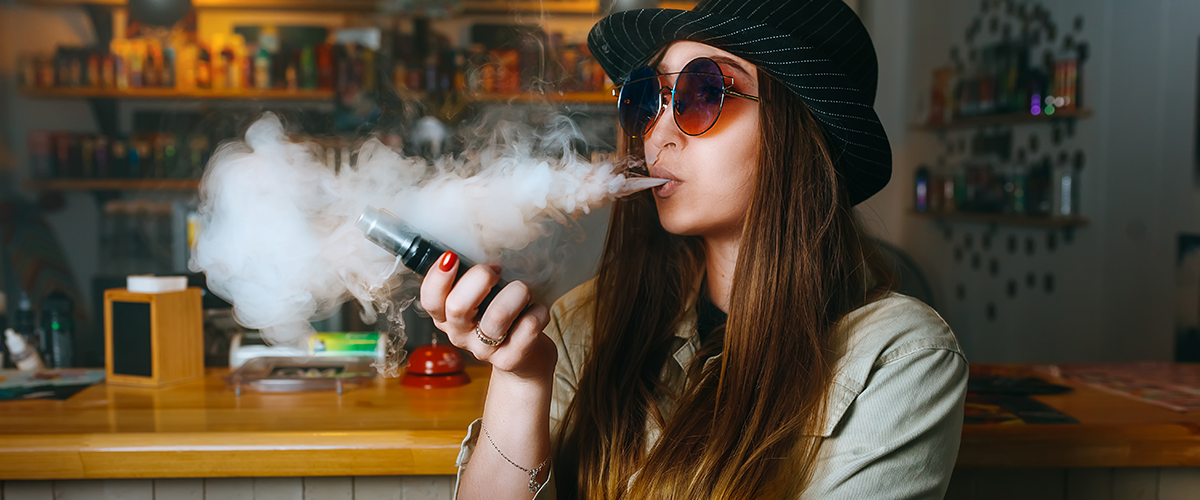
Unlike THC-rich strains of cannabis, which can induce borderline psychedelic effects if inhaled in sufficient quantities, the psychological effects of smoking or vaping CBD flowers are mild and predominantly positive.
At lower doses, inhaling CBD typically induces a relaxed yet alert state; aches are reduced, stress dissolved, the mind cleared, and a subtle euphoria motivates the user to action.
At higher doses, CBD has more prominent sedative effects, not entirely unlike indica strains of marijuana but without the ‘high’; heavier pains are dampened, motivation is reduced, and drowsiness or fatigue takes over, pushing the body to rest.
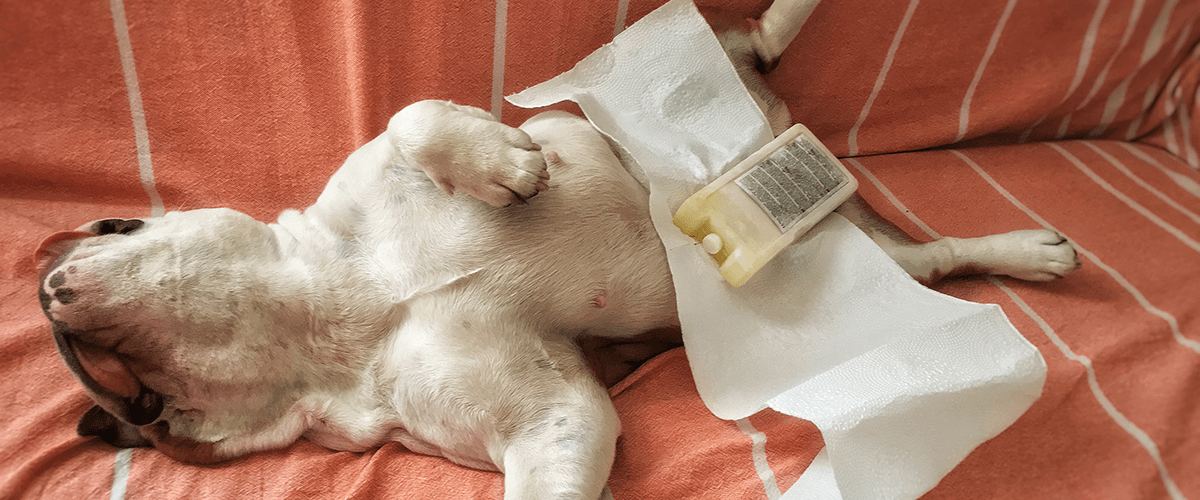
While in the past cannabidiol did not receive much interest from cannabis users in the global North because it’s not psychoactive, the increasing prevalence of mental disorders and many painful physiological conditions the compound has shown effective in treating have propelled it into the spotlight of the global alternative healing scene.
Below are some of the conditions CBD has been touted, by science and/or overwhelming anecdotal reports, to be therapeutic for.
The research on CBD began in 1940 when Harvard-trained chemist Roger Adams first extracted the molecule from Cannabis sativa. The next couple of decades saw a rise in pharmacological experiments using CBD oil, gathering strong momentum by the 1980s when Dr. Raphael Mechoulam, the scientist who first described the chemical structure of CBD in 1963, and others, began conducting landmark research on CBD as a therapy for epilepsy. This early start eventually resulted in today’s Epidiolex, the only FDA-approved CBD pharmaceutical, clinically proven to significantly reduce the frequency of epileptic seizures in patients.
CBD is primarily used for the alleviation of pain and suppression of inflammations. A large body of scientific research has unequivocally demonstrated that cannabinoids THC and CBD are effective analgesics and anti-inflammatories. Whether the pain is acute or chronic, stemming from inflammation, muscle exertion, or a neuropathic issue, smoking or vaping CBD flowers provides a decent chance for instantaneous relief.
This includes rheumatoid arthritis and osteoarthritis, which are inflammatory conditions. A study conducted on rodents has found that CBD gel was effective in reducing the pain and swelling in the animals’ joints, but there are also ample anecdotal reports that smoking CBD flowers help manage pain in arthritis patients.
There are also some findings suggesting that CBD and THC may be therapeutic for migraines and headaches, although it doesn’t seem to work for everyone — it’s possible that the effect depends on the correspondence of the chemical profile of cannabis strains with specific users’ biochemical processes. More research is needed for this to be understood better.Some of the most popular use of CBD as therapeutic targets psychological disorders such as anxiety, depression, and PTSD. Common pharmaceutical treatments for these disorders are arguably over-prescribed throughout the world, and have been widely shown to be dependence-forming, of overstated effectiveness, and often dangerous, causing a wide array of adverse side effects and withdrawal symptoms.
In numerous studies, CBD has been shown effective in stress reduction and mood regulation, which helps alleviate symptoms of depression and anxiety, as well as in extinguishing aversive memories and inhibiting them from forming again, which has helped many in decreasing the severity of their PTSD symptoms.Human studies on CBD’s effects on nausea are yet to be published, but research conducted on rodents has reported that low doses of CBD help suppress nausea. There are also plenty of anecdotal reports coming from cancer patients claiming that the compound has helped alleviate nausea as a result of chemotherapy and cancer symptoms. Cannabidiolic acid (CBDA), the raw form of CBD, has shown even stronger anti-emetic effects, so those hoping to reduce nausea with CBD should look for buds and products which also contain CBDA.
A few studies have found that CBD use has beneficial effects on restoring healthy sleep patterns and treating insomnia. However, anecdotal reports indicate that it doesn’t seem to work for everyone and that the dosage appears to play a big role — low doses generally seem to keep users more alert, while higher ones tend to induce drowsiness.
Unlike THC, which is known to cause the “munchies” in recreational cannabis smokers, consuming CBD has been found to help suppress appetite and thus reduce body weight — anecdotal reports of this are also abundantly available on online forums. Additionally, an in vitro study found that CBD promotes the “browning” of white fat cells, a process that converts energy-storing fat into calorie-burning fat.
Obesity is known to be the primary cause of type-2 diabetes, which has become a major health concern in the world. CBD has shown promise in helping manage the condition — there is a growing body of research suggesting that this cannabinoid may serve to optimize insulin secretion and overall glucose levels, and protect the blood vessels from damage done by the glucose by means of reducing oxidative stress, inflammation, cell death, and vascular hyperpermeability associated with diabetes.CBD has been shown in many studies to be effective in interrupting various kinds of addiction, including on opioids, cocaine, and psychostimulants, as well as dependency on cannabis and tobacco. CBD flowers especially appear to be the ideal form of CBD for weaning off weed and cigarettes, as maintaining the act of inhaling retains the ‘ritual’ aspect of smoking while the user lowers, or eliminates, THC or nicotine intake. The soothing effect of CBD also helps reduce nicotine cravings, significantly lowering the number of cigarettes smoked, according to a study that examined this effect.
The autism spectrum is diverse both in terms of the quality and intensity of the symptoms. While many people living with autism are well-integrated, high-functioning adults, some suffer from more serious, life-impeding behavioral manifestations. CBD therapy has been found to result in dramatic improvements in numerous symptoms of ASD in the majority of participants tested (although these results are from a study with a small sample size), with only infrequent and mild side effects recorded. Many autistic people also suffer from associated anxiety, and many epileptic patients display symptoms of autism as comorbidity — CBD has a therapeutic effect on both conditions.
Both CBD and THC have been found to have antioxidant properties, which means that they can help slow down the main cause of cellular degeneration — oxidation. Numerous studies have indicated that CBD may help preserve neurological function and thus protect from brain damage after a stroke, as well as provide relief for symptoms of a variety of neurological disorders such as Alzheimer’s disease and dementia, Parkinson's disease, Huntington's disease, multiple sclerosis, and others.
There are many anecdotal reports on the effectiveness of CBD and THC in alleviating cancer and chemotherapy symptoms and even some (in vitro) scientific studies suggesting it may help in inhibiting the proliferation of cancer cells and stimulating their self-destruction. CBD should definitely not be regarded as a ‘cure for cancer,’ but it reportedly brings relief from pain and nausea associated with the illness and its treatment.
CBD has been shown in vitro to be able to reduce infarct size and increase blood flow in animal models of stroke, as well as to reduce vascular damage in high-glucose environments.
The cannabinoid has also been found to help relax the tissues in the gastrointestinal tract, which can lead to fewer episodes of bloating, gas, constipation, and diarrhea. Reports indicate it’s able to alleviate nausea, pain, and gastric inflammation, as well as stop the food from moving too quickly through the system and thus allow for better digestion.There are limited reports suggesting that CBD may be helpful in autoimmune conditions such as lupus erythematosus and multiple sclerosis. However, even the disorders themselves are poorly understood and often difficult to diagnose, so this kind of research cannot be taken reliably at this point in time.
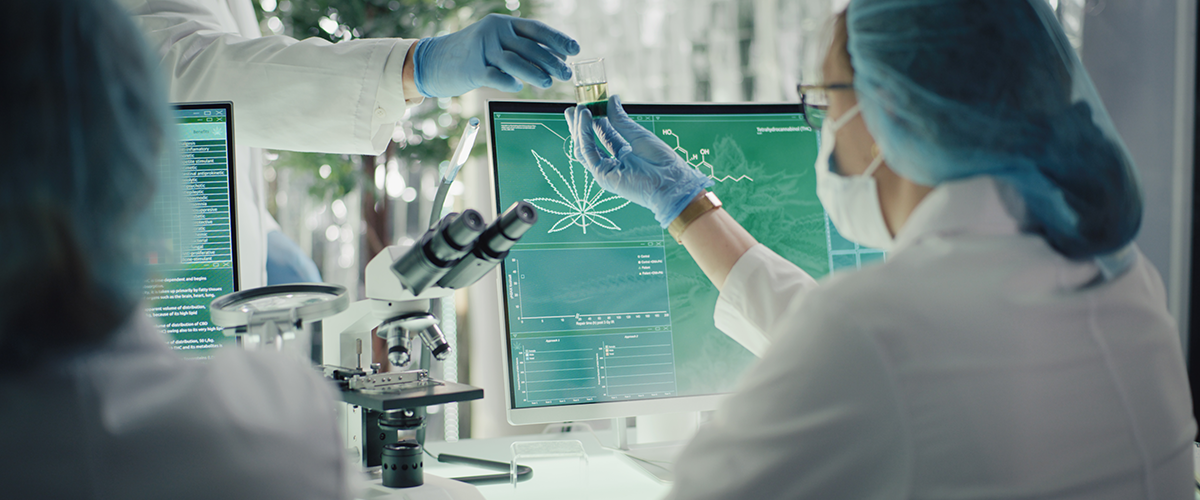
Cannabidiol seems to be an extremely versatile therapeutic whose benefits science is only beginning to unravel. Thankfully, with the swell of hemp and cannabis regulatory changes, and the rapid expansion of the CBD product market, science is also experiencing record motivation to explore this compound’s myriad potential uses.
But, how exactly does this cannabinoid achieve all these remarkable effects?
There are many biochemical processes that take place once CBD enters the bloodstream and the brain. Not all of them are fully understood, and many are the result of an ‘entourage’ effect between the various cannabinoids, terpenes, and flavonoids within each strain, but some of the more general and straightforward connections have been confirmed and described by numerous scientific studies, and can thus be discussed here.
The most important biochemical footprint of CBD is on the endocannabinoid system (ECS) — one of the most extensive and influential systems in the human body, which helps maintain its homeostasis or balance. The ECS regulates a wide array of functions, including pain, stress, appetite, energy, addiction, reproduction, body temperature, immunity, motor control, mood, memory, sleep, and response to pleasure.
While THC directly activates the CB1 and CB2 endocannabinoid (eCB) receptors, CBD does not. However, CBD has a sprawling indirect interaction with the ECS, which primarily facilitates the exertion of its analgesic and anti-inflammatory effects. When consumed together with THC, CBD also seems to indirectly prevent the psychoactive cannabinoid from affecting the CB1 receptor, thereby reducing THC’s adverse effects such as anxiety and paranoia. This is the chemical reasoning behind the most notable ‘entourage’ effect in cannabis.
The ECS has also been implicated in the processing of emotional memories — it’s thought that CBD’s reported ability to alter aversive memories and prevent their reconsolidation, improving the symptomatology of PTSD, stems from this process.
CBD’s other main course of action is the stimulation of the parasympathetic nervous system, which is in charge of stopping the body from overworking, promoting rest, healing, digestion, rejuvenation, and regeneration. It also inhibits the sympathetic nervous system, responsible for eliciting stressful responses, as well as for triggering the fight-or-flight mechanism. These processes are thought to make up the basis of CBD’s overall calming neural action.
To add to this, cannabidiol is a known activator of the 5-HT1A serotonin receptor, understood to be responsible for mood regulation and catalyzing states like anxiety and happiness. It also modulates the levels of glutamate, a neurotransmitter that plays an important role in learning and memory. Research indicates that these two mechanisms may form the basis of CBD’s anxiolytic and antidepressant effects.
One more rather important chemical process is CBD’s inhibitory action on the Fatty Acid Amide Hydrolase (FAAH), an enzyme responsible for breaking down anandamide. Anandamide is a very interesting natural endocannabinoid responsible for regulating feeding behavior and generating motivation and pleasure, and its levels have also been found to be in an inverse relationship with psychotic symptoms. As a result of CBD’s interaction with the FAAH, more anandamide stays in circulation, reducing the need for feeding, inducing motivation and pleasure, and, reportedly, alleviating schizophrenic symptoms.
In promising new research, CBD was found to interact with the TRPV2 receptor, the orphan G‐protein coupled receptor (GPR55), and peroxisome proliferator‐activated receptors (PPARs); a combination of these is thought to account in part for its antitumor effects.
This all may seem complex, but it’s barely scratching the surface — research into the immense variety of CBD’s effects on the incredibly intricate internal system of the human body is still in its infancy. With cannabidiol in the scientific and economic spotlight, there is no doubt we will be discovering and understanding much more very soon, and that disorder-specific strains will be engineered in the future with exact levels and ratios of the necessary therapeutic compounds.
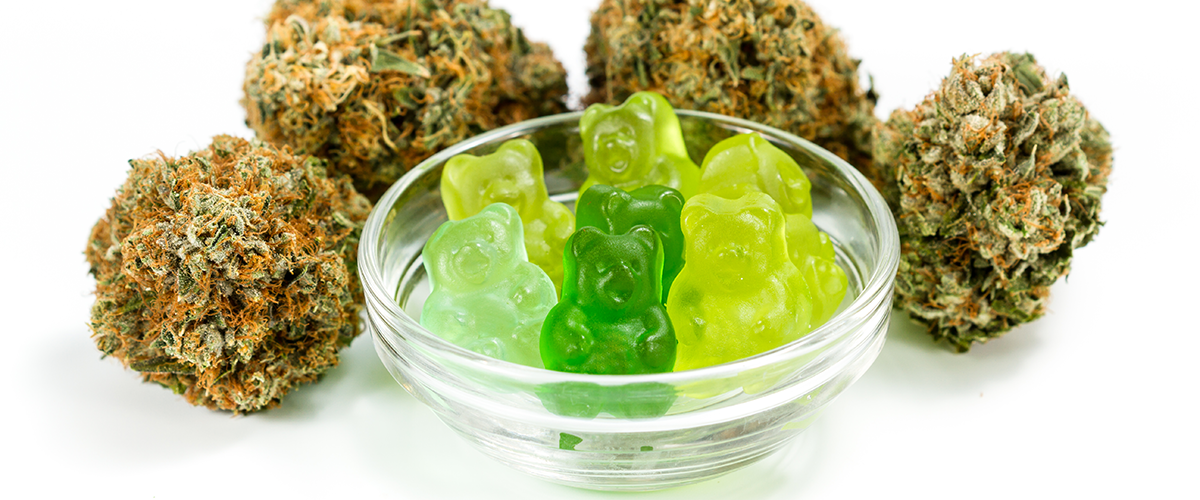
Although many CBD aficionados opt for extract-based products such as oils, tinctures, or edibles, consuming CBD flowers is becoming a preferred option for many as the flower contains all the cannabinoids, terpenes, and flavonoids the plant creates during growth. It could be said that it’s the most natural form CBD comes in, which also packs the many therapeutic benefits all those minor compounds bring.
There are a few different ways in which you can enjoy CBD-rich hemp flowers:
While the act of smoking in and of itself is harmful to the respiratory system due to the heated smoke passing through it, smoking CBD flowers in a joint carries significantly less health risk than smoking cigarettes. With no inherently toxic and carcinogenic matter added without your knowledge, and no psychoactive compounds to alter your consciousness, pure CBD flower rollies are likely among the least harmful things you can smoke.
If you are not a fan of joints, you can choose to smoke from a pipe instead. Some more sophisticated pipes, as well as bongs and hookahs, have water chambers that serve to cool down the smoke entering your lungs, making it easier to inhale and lowering the risk of respiratory damage.
Smoking CBD flowers is one of the most direct and effective ways to consume CBD as the molecules enter the bloodstream directly through the lungs. However, CBD is also quickly metabolized when inhaled, so the effects are not as long-lasting as when taken orally.
Vaporizers are becoming massively popular as accessories that reportedly mitigate respiratory risk by not actually burning the contents in their chambers, but heating them up just enough so they evaporate.
As a relatively new phenomenon, long-term consequences of vaping are still unknown, but the science and theory seem to suggest it’s significantly less harmful than smoking — it’s also known that individuals with pre-existing lung conditions or those prone to coughing fits tend to handle vaping CBD flowers better than smoking a joint.
To be able to vape CBD flowers, however, not any device will do — a special ‘dry herb’ vaporizer is needed, with coils and batteries high-powered enough to convert dry matter into vapor — it will deliver a smoother, stronger, and safer smoke than when smoking a joint.
Vaporizing CBD flowers is arguably the best way to consume CBD — the effect is instantaneous, the health risk is low, and the CBD absorption is higher than for any other method. However, CBD is also quickly metabolized when inhaled, so the effects are not as long-lasting as when taken orally.
Another advantage of vaping CBD flowers over smoking is discreteness — not only are most vaporizers portable and inconspicuous, but the exhaled smoke is typically odorless, making it easy to conceal a CBD session in public if needed.
Making CBD edibles is an easy, fun, and delicious way to enjoy the therapeutic benefits of CBD. In order to get the full benefits, it’s advised to first decarboxylate your CBD flowers by baking them (in small chunks) in an oven for about 30min at a temperature of 240-300 °F / 115-150 °C (temperatures higher than the upper limit will degrade the CBD).
After this process, you can grind them up and add them to butter (resulting in cannabutter), cookies, pastries, soups, stews, juices, smoothies, or even cocktails.
Consuming CBD orally takes the longest amount of time to work (30min to an hour) because the compound goes through the digestive tract and gets metabolized in the liver, like regular dietary supplements. The advantage is that the effective duration is significantly longer than when it is inhaled, but, due to the lower absorption rate, a significantly higher amount is needed.
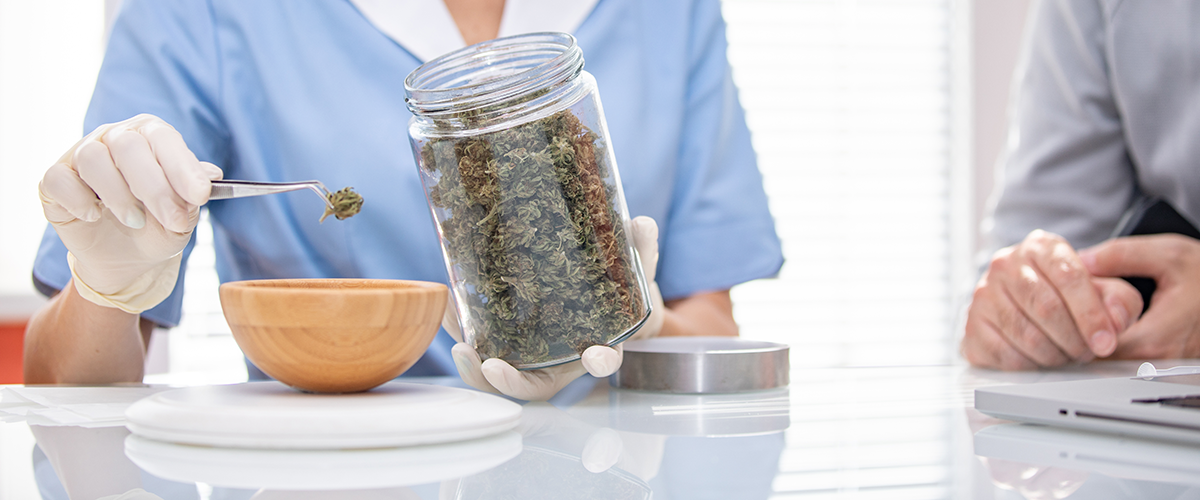
With CBD flowers, the intake is difficult to measure as precisely as with CBD oil, tincture, or edible products, but, based on the levels of CBD noted by the producer (distinct for each strain), it’s possible to ascertain how much of the cannabinoid is contained per gram of bud.
Knowing that the typical CBD serving for an adult is about 5-10mg taken twice daily, you can calculate how much flower to smoke (or take orally). This is made a bit more complex with bodyweight variations and individual reactions to CBD, but the good thing about inhaling CBD flowers is that the feedback is instantaneous, so you can observe what your perfect amount is in real-time, there’s no possibility of overdosing, and the side effects are basically non-existent.
For this reason, you should gauge the dosage that works for you personally — however many puffs you need to feel relaxed, but not too relaxed, should be your sweet spot.
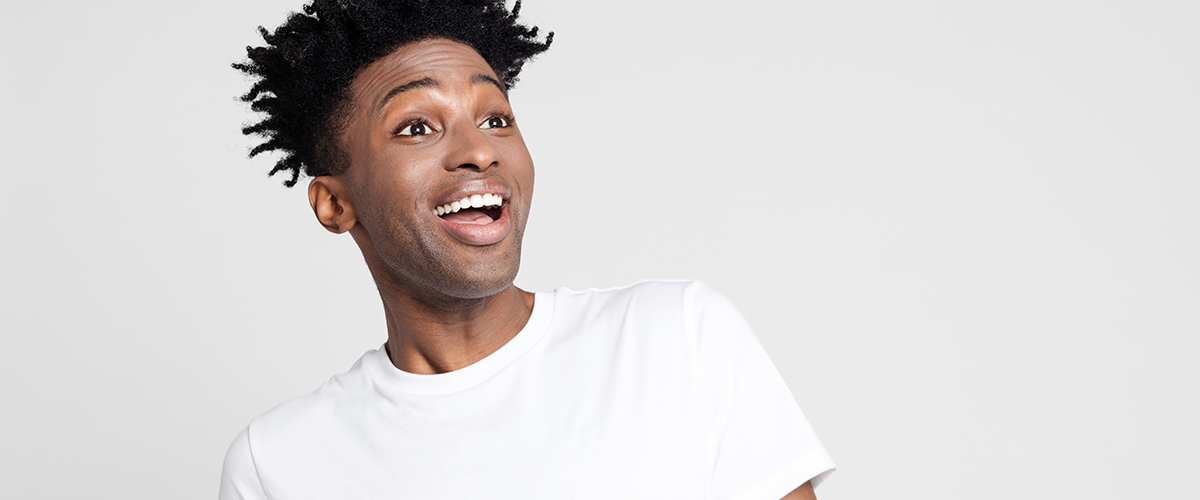
Adverse effects from CBD are reportedly very rare and mild — especially with inhalation of low doses, they are practically non-existent.
However, for the sake of transparency, we will list the most common reported side effects: dry mouth, reduced appetite, wakefulness or drowsiness, lowered blood pressure, and fatigue.
Depending on what CBD is used for, some of these may actually be viewed as desirable effects. For example, if using CBD to fall asleep, becoming drowsy is the goal; or, if taking CBD to lose weight, a reduced appetite comes in handy.
All things considered, with a growing body of promising research, an abundance of personal reports of its effectiveness, and a practically negligible chance of experiencing adverse effects, CBD is definitely worth a try for those suffering from any of the above disorders and unsatisfied with the results delivered by conventional pharmaceuticals.

In many European countries, hemp-derived CBD products are legal, provided they meet certain criteria, which most often means that they contain less than 0.2% THC content.
However, while the CBD market had seen steady expansion throughout the 2010s, in January 2019, the European Food Safety Authority (EFSA) instituted new requirements for CBD products, stating that they must be approved as a novel food by a national food authority. This brought about an ongoing tightening of regulations in many countries.
Please check our shipping policies for information on specific countries in Europe we can ship CBD flowers to.
In the USA, all hemp-derived CBD flowers (with less than 0.3% THC content) are legal on a federal level. However, each state has its own regulations of hemp and CBD, which can override federal regulations.
A total of three states currently consider both CBD and hemp illegal: Idaho, Iowa, and South Dakota. The FDA-approved drug Epidiolex is the only legal form of CBD use in these states.
As for the rest of the country, CBD flowers are legal if they are derived from hemp, and if they are derived from marijuana, they undergo the same regulations that govern medical and recreational cannabis use.
In Australia, CBD products that contain more than 98% CBD (meaning that less than 2% are other cannabinoids) are legal with a prescription.
In Canada, CBD flowers are legal to purchase, but only those from specific government-regulated cultivars that contain minimal amounts of THC.
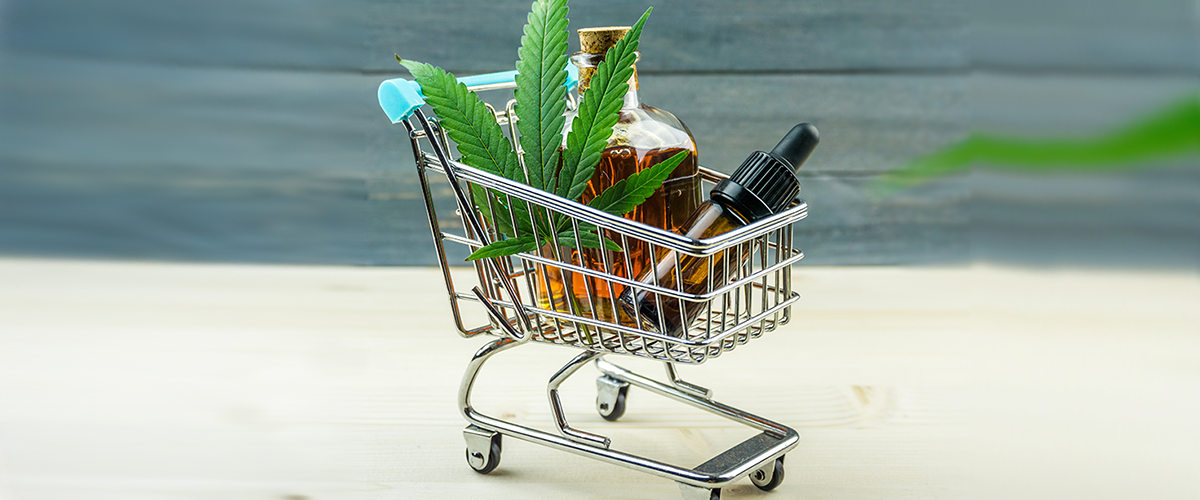
While the expanding demand for cannabidiol is partly spurred by promises of this compound being a miracle cure for all ailments, those interested in healing with CBD should steer clear of providers using this kind of unethical marketing.
At Elephantos.com, we strive to provide you with the wealth of unbiased crowd- and science-sourced information you need to make an informed purchase.
Our line-up of CBD flowers consists of strains of supreme quality and outstanding purity, each with a THC level below the 0,2% legal limit. We are the official distributor for Plant of Life, one of the most well-known CBD producers in the European market, with over a decade in business and thousands of happy customers.
Each CBD strain we sell has been certified with laboratory analysis, verifying its chemical structure and allowing you to order legally and with ease in a complex reality riddled by European regulations.
Click here to browse the full assortment of CBD strains we offer or check out our selection of the finest CBD flowers below.